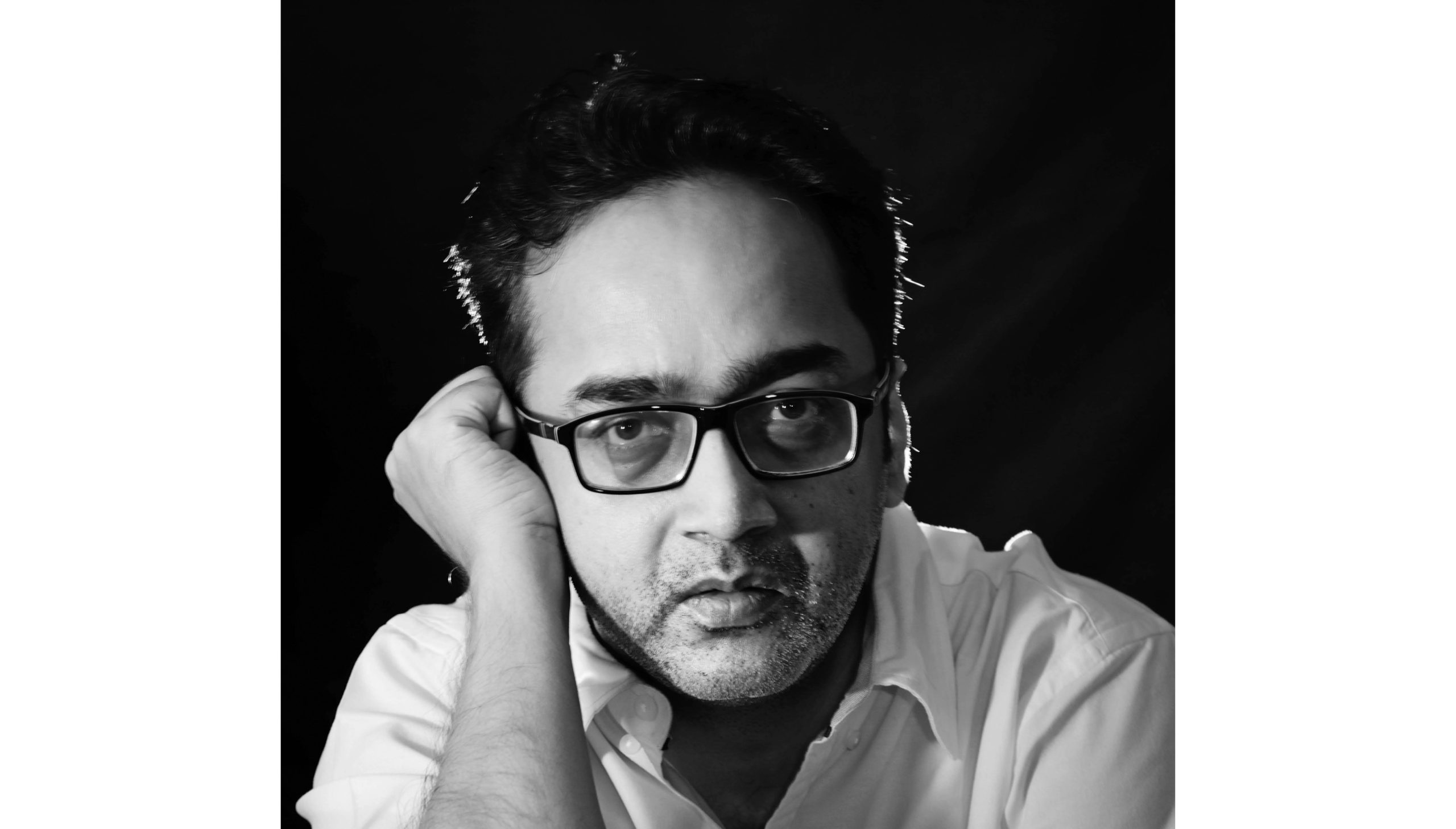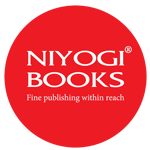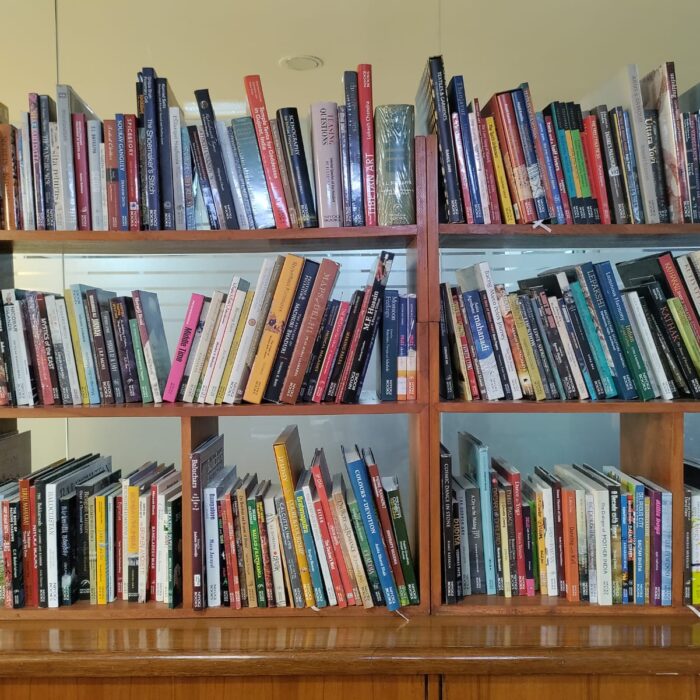
Meet the Author | In conversation with Rajat Chaudhuri
Rajat Chaudhuri has published six books in two languages including fiction and translation. He selected and edited The Best Asian Speculative Fiction (2018) collection of stories and is an editor of a forthcoming Asia-Pacific solarpunk anthology to be co-published by RIHN, Japan and World Weaver Press, US. Chaudhuri’s climate change novel The Butterfly Effect (2018) is listed as one of `Fifty Must-Read Eco-disasters in Fiction’ by Book Riot (US) and has been widely mentioned in national media for its parallels with the Covid-19 pandemic.
Rajat has won a number of writing fellowships and international residency awards including British Council administered Charles Wallace Fellowship (UK), Hawthornden Fellowship (Scotland, UK), Ministry of Culture, Korea (ARKO)-INKO residency award (South Korea), Villa Sarkia residency award (Finland, invited 2020) and Sangam House (India) residency.
So, here it goes:
Q. Tell us something about your writing process. How do you come up with your plots? Is it something that you have read about in a book/watched in a film, or contemporary events unfolding on the news? Do you keep going back to certain themes?
A. For me, each book started differently. There was almost always a distinct image, a strong impression, a person, or an overlap of these that propelled me on. Then again the experience one gains from living a certain kind of life has an important role to play. I have been an environmental activist for many years now and quite closely involved with climate change and sustainability work which, as you can well guess, can be fulfilling and frustrating in equal measure. But in course of these engagements, I have had the opportunity to travel widely and meet a great variety of people from different nationalities and backgrounds. I have always thought about using this rich and diverse experience creatively. My first novel (Amber Dusk) was essentially a fruition of this engagement and so was my latest (The Butterfly Effect) but in a very different way, of course. In The Butterfly Effect, which has been variously dubbed as sci-fi, cli-fi, speculative and biopunk, I was trying to visualise my activist work through a creative lens—not in the sense of the experience of activism and meeting people and creating characters but as another means to engage people (here the reader)—about the dangers posed by science without precaution and a neo-liberal order that is anchored to a dream of endless growth disregarding the environment, planetary well-being, equity and the future.
Q.You have been part of several writers’ residencies and have received prestigious fellowships abroad. Tell us more about it?
A. I have been generally lucky with fellowships and residencies. These provided me with the opportunity to work on new books or further develop ideas in progress. All of these—British Council administered Charles Wallace Fellowship, UK, Hawthornden Castle Fellowship, Scotland, Korean Arts Council and INKO sponsored Toji residency, South Korea and Sangam House residency, India—have benefitted me in some way or the other. From a 16th-century castle in Scotland to a mountain retreat in Korea, each of these retreats has offered me a unique working environment with the company of writers as a bonus. This year (2020) my proposal to work on a new book was accepted by the Villa Sarkia residency in Finland and I was also slated to perform at the Poetry Moon festival in Helsinki but the risk of international travel and other factors mean I have to miss it. This is somewhat unfortunate as my residency proposal is about the next book of The Butterfly Effect But I have begun to work on it as the Covid-19 lockdowns provided the opportunity for undisturbed work here in Calcutta!
Q.Your novels explore timeless themes like death, love, suffering, loneliness, nature versus science, albeit through a contemporary lens. Please comment.
A. You would notice the first four of these are more human-centred issues or concerns while the last extends to the non-human world. My affinity for darkness is partly rooted, I suppose, in an early interest in gothic fiction and similar stories. Of course, these are the universal issues present in the literature of different cultures. I have never thought this through but my eclectic reading may have introduced me to this combination of themes. You would also appreciate that fear, darkness, the ‘gothic’ are realms where the human and non-human worlds interact. Fear can take the form of a fear of storms or of an incurable malady sweeping across populations. It can be the fear of death. These are the issues that intrigue me more these days as the worlds beyond and more than human, the world of storm clouds, hidden life, ultraviolet radiation and stressed ecosystems impinge upon us, talk back to us, pointing out what we have done to the planet. So I try to experiment with form and story to make these other worlds speak while also seeing how all those themes that you mention are connected in a certain way.
Q. There are so many genres present in your writing. I would be very interested in knowing who your earliest literary influences were.
A. Dickens, Poe, Flaubert, Dostoevsky, Hemingway, Herman Hesse, Bibhutibhusan, Saradindu Bandopadhyay, Premendra Mitra, assorted horror and detective fiction including the hard-boiled variety and others. ‘Earliest’ is difficult to pinpoint, who knows it could be Tintin and some of the abridged classics—Stevenson, Defoe et al.
Q. Neither Hotel Calcutta nor The Butterfly Effect has straightforward, linear narratives. Hotel Calcutta consists of short stories within a framing narrative. The Butterfly Effect is a time-travelling novel inspired by the genre of speculative fiction. Do you think this non-linear narration is a more effective way of capturing the chaos of modern life?
A. Yes, absolutely. If you use picture editing software they have this lasso tool which picks up random shapes quite easily. The chaos of the climate-ravaged contemporary world, the hyperobject like characteristics of climate change, the polyphonic, carnivalesque expression of the present and the borderless nature of catastrophe in the backdrop of globalisation are not communicated well through simple linear narration. At least not for me. Which necessitates these, rather risky, experiments with narration and form.
Q. We find elements such as genetically modified food, a post-apocalyptic dystopian setting, eco-disaster in your speculative fiction The Butterfly Effect. This requires a lot of imagination as well as extensive research. Please give us some insight into your conception and execution of a complex work like this one.
A. Genetic modification or gene mod as an important plot element is new in Indian fiction. Anil Menon’s The Beast with Nine Billion Feet is the only book which comes to mind. The Butterfly Effect is about genetically modified food which has never been written about in Indian fiction (in the West, Nancy Kress and Jon McGoran are two authors who come to mind) and it also has gene mod humans as characters. Also, large parts of the backdrop is located in a climate change ravaged near future. My environmental work had introduced me quite early to GMOs as well as to the threat of climate change. As the threat of climate change and dangers posed by GMOs to human health grew bigger and more and more writers (at least in the West) approached the former through their fiction, it became obvious to me that I should do likewise. This is also because my interaction with a variety of ‘stakeholders’ including rural and urban consumers, climate-vulnerable populations, activists, researchers, business and policy-makers brought out the fact that a good story can engage people in ways that bare scientific facts, news reports or activist speeches may not. A story often complements these other modes of communication and so with that solid belief, I went about working on the plot and creating the characters. This novel also benefitted from a number of fellowships and residencies which helped me research the settings and gather additional material. I usually immerse myself in reading (mostly non-fiction) about a subject, visiting the fictional settings, talking with locals and interviewing experts before starting a new fiction project. I worked closely with geneticist Priyadarshi Basu, read a variety of books and research material, and spoke with many people before starting to write.
Q. The Butterfly Effect’s eco-disaster storyline has uncanny similarities with the present pandemic that is plaguing our world. The geneticist in your novel goes on to write in his diary, ‘Life on earth will never be the same again.’ This line also happens to be an apt comment on our lives these past few months. Did you anticipate something like this when you wrote about the scourge that ravages the world in the last part of your book?
A. As climate activists we are always anticipating worsening of the situation while we try to communicate the message of sustainability. I had considered the possibility of twin disasters reinforcing one another and snowballing into a major crisis. We already had the example of Japan’s Fukushima nuclear disaster where an earthquake and a tsunami resulted in flooding, loss of grid power along with loss of emergency backup power which was necessary for cooling the nuclear reactors. It was an extremely rare concatenation of misfortunes which fits into what Nassim Nicholas Taleb calls ‘black swan’ event. These things can happen and pandemics are not so rare as to qualify as a ‘black swan’ event but a powerful cyclone hitting a pandemic affected region, like what happened with Amphan in Bengal, that is rare and in my book too something similar is happening. There you find the scourge spreading in the backdrop of worsening climate change.
Q. You have translated Raater Kolkata by Hemendra Kumar Roy, a work published almost a hundred years ago. What were the challenges involved in translating a work full of archaic Bangla? You had to make the work accessible to modern readers and yet retain the distinctive stamp of that period.
A. Yes, it was a challenge but an exciting challenge no doubt. I am very attached to my city and have been exposed to its past through books both in Bengali and English. Whenever I get time, I take long walks through old and new neighbourhoods, talk with people, have steaming hot tea sitting on the steps of an old building or telebhaja from a makeshift stall in a centuries-old Greek cemetery. All this makes the encounter with the texts more interesting. So to come back to your question, I tried to use some archaic words, constructions and a smattering of Bengali vocabulary which together may have helped to impart the flavour of Hemendra-babu’s time. I also added extensive endnotes to the book hoping this would be of use to researchers and anyone wanting to dig deeper. But mostly I have tried to use smoothly flowing sentences and unadorned prose so that the reader doesn’t get bogged down.
Q. There aren’t many bilingual writers like you who are equally proficient in English and Bangla. How do you straddle the two worlds?
A. I enjoy doing it though it is often like what Bengalis call ‘dui noukae pa diye chola’—literally straddling two boats (two cultures) with the ever-present danger of falling between two stools. It is for my reader to decide whether I ended up in the deep water.


